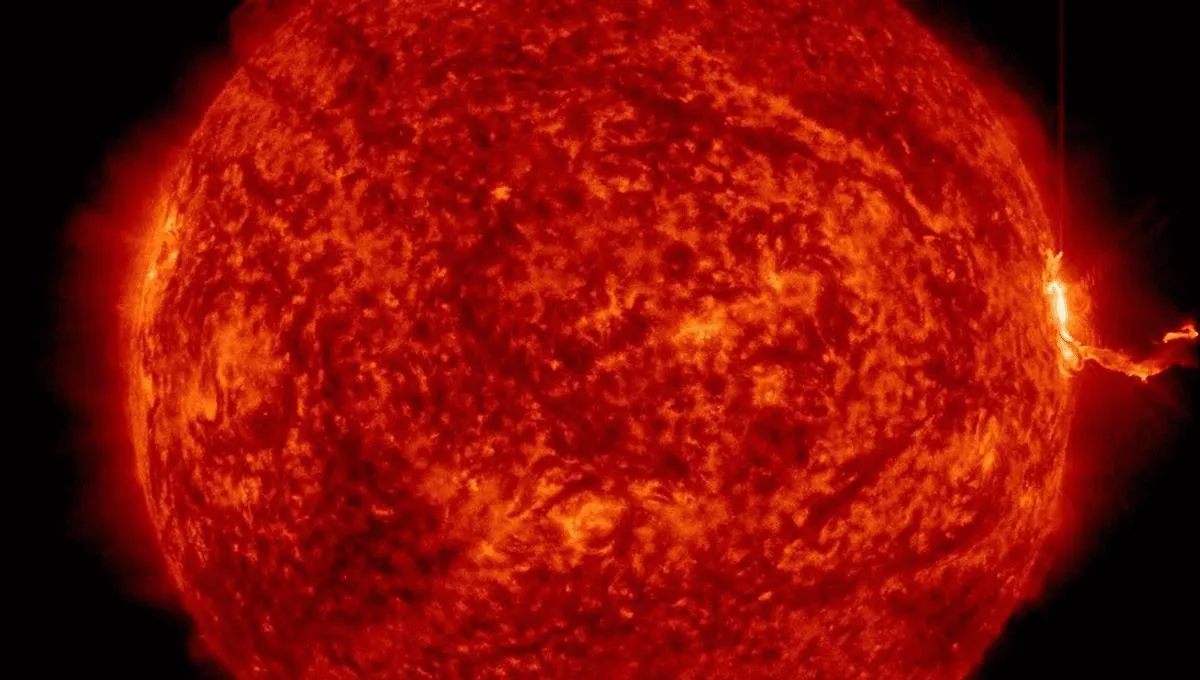
The Sun has had an exceptionally active year in 2024, sending numerous solar storms towards Earth as we approach the peak of the Solar Cycle. This stellar activity is far from over, as our Sun has recently unleashed a powerful solar flare from sunspot region 4087. This particular flare has been classified as an X2.7 flare, indicating a significant release of energy.
Solar flares are categorized by their intensity, with the weakest being B-class, followed by C, M, and the most powerful, X-class. The numbers that follow these letters signify the strength within that category. For instance, an X-class flare is ten times more powerful than an M-class flare, and one hundred times more powerful than a C-class flare, as explained by NASA's Scientific Visualization Studio. This classification system is akin to the Richter scale used for measuring earthquakes, where each increase in letter denotes a ten-fold rise in energy output.
While C-class flares are too weak to have any noticeable effects on Earth, M-class flares can cause brief radio blackouts near the poles and pose minor risks to astronauts due to radiation storms. Interestingly, the X-class category can extend beyond X1, with flares capable of exceeding ten times the energy output of an X1 flare. Recently, sunspot region 4087 emitted a smaller flare rated at X1.2, which resulted in a brief shortwave radio blackout across the Americas, as reported by SpaceWeather.com.
This X1.2 flare was linked to a coronal mass ejection (CME), which involves large expulsions of plasma and magnetic fields from the Sun's corona. CMEs can accelerate energetic protons, causing them to cascade into Earth's atmosphere and trigger low S1-class radiation storm warnings. Although this warning level does not threaten biological life, it can still disrupt radio communications. Fortunately, the coronal material from this CME is predicted to miss Earth, instead impacting Mercury and grazing Venus.
Following the X1.2 flare, an M-class solar flare emerged shortly thereafter, which could potentially interact with Earth, possibly bringing auroras along with it. The X2.7 flare, released at 08:25 AM UTC on May 14, is not anticipated to produce a CME that will collide with Earth, according to the NOAA Space Weather Prediction Center. Such powerful flares are relatively rare, and users of high-frequency (HF) radio signals may face temporary signal degradation or complete loss on much of the sunlit side of the planet.
While astronomers can forecast the arrival of CMEs (which can take hours to days to reach Earth), the flares themselves travel at the speed of light. Consequently, we only observe their effects once they impact our planet. These effects can include significant interference with radio waves. The heightened levels of X-ray and extreme ultraviolet (EUV) radiation lead to ionization in the lower layers of the ionosphere on the sunlit side of Earth. Under normal conditions, HF radio waves can effectively support long-distance communication by refracting through the upper ionosphere.
However, when a sufficiently strong solar flare occurs, it produces ionization in the lower, denser layers of the ionosphere, known as the D-layer. This interaction causes radio waves to lose energy due to increased collisions in the denser D-layer. As a result, HF radio signals may become degraded or entirely absorbed, leading to a phenomenon known as a radio blackout. This blackout primarily affects the 3 to 30 MHz frequency band.
Looking ahead, sunspot region 4087 may continue to produce more solar flares and CMEs in the coming days. There is a possibility that Earth could find itself in the path of these solar emissions as it rotates into view, making it a crucial time for monitoring solar activity.